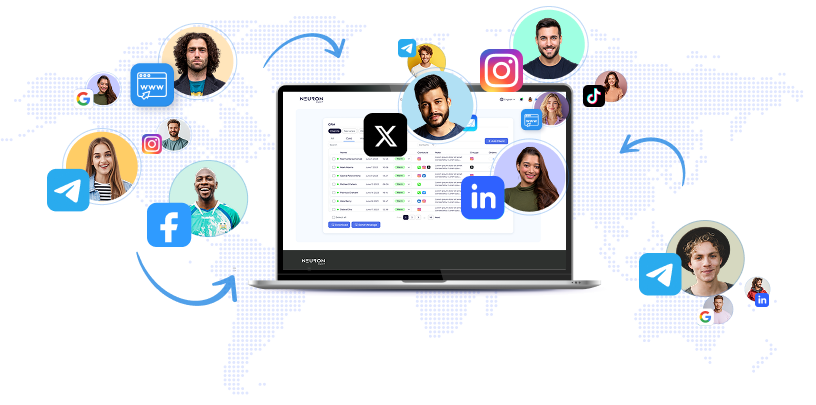
Around 2019, prior to AI’s rapid rise, C-suite leaders mainly focused on ensuring sales executives kept CRM data updated. Today, with expanding technology stacks, their concerns have widened: “What’s the ROI of our AI sales platforms?Are teams maximizing this tech?And how do we still ensure accurate CRM updates?” ROI now dominates software discussions, embedding AI deeply into roadmaps, revenue meetings, and social media. However, despite promises of frictionless sales, pipelines often remain flawed, highlighting a gap between AI hype and real revenue gains—a phenomenon termed AI-washing, where proclaimed AI-driven transformations fail to alter workflows or improve data. This message targets CROs and revenue leaders seeking a pragmatic AI roadmap over hype by comparing AI sales assistants, agents, and the aspirational AI SDR, showing how true effectiveness outperforms mere efficiency, and how ROI can be validated without complex attribution. ### Reality in Revenue Teams Today Insights from three SaaS revenue leaders show AI tools are widespread but seldom influence critical buying journey steps. Many co-pilots and dashboards exist, yet pipeline velocity rarely improves because efficiency alone—without proper prioritization—is superficial. Revenue leaders need fewer decision steps, not extra AI tasks. #### 1. Start With the Verb, Not the Vendor B2B reps and buyers face buzzword overload. The clearest value emerges by translating every AI claim into a “job to be done. ” Without a defined job, value remains vague. - **Assistants** aid preparation by surfacing context, summarizing accounts, drafting emails, and accelerating readiness. - **Agents** orchestrate multi-step workflows such as lead qualification, data enrichment, scheduling, CRM updates, and prompting next steps. When well-designed, they serve as orchestration tools, not mere novelties. - **AI SDRs** automate prospecting and trigger communications but still depend on humans for discovery and negotiation, adding capacity rather than replacing headcount. Jonathan Pogact from Seamless. ai recommends mapping AI tools to customer journey stages instead of forcing them into org charts—ensuring assistants and agents sharpen sellers’ effectiveness and link to measurable actions. #### 2. Efficiency Is a Coupon; Effectiveness Is the Catalyst The industry often touts “giving time back, ” but real value means “return on time”: doing the right activities, correctly and in order. Efficiency saves minutes; effectiveness removes bottlenecks. AI should target chokepoints like filtering unqualified leads or reviving stalled proposals. Eric Gilpin, CRO of G2, stresses: “I don’t want to be efficient; I want to be effective—doing the right things, the right way, in the right order. ” Best practices include automating “last mile” customer-near workflows (e. g. , booking meetings, demos, signing orders) to deliver visible ROI, consolidating fragmented tech stacks to ease adoption, and embedding AI seamlessly so reps avoid learning new portals—maximizing usage. #### 3. Measure the Work, Not the Wow Hype emphasizes “AI-powered, ” but revenue derives from measurable improvements in key metrics like meetings booked. Effective measurement requires a four-part scorecard: - **Quality (offline):** Human-verified accuracy, relevance, tone, and clarity pre-deployment. - **Adoption (behavioral):** Weekly active users and retention; sub-10–20% adoption signals minimal impact. - **Efficiency (operational):** Time per task and sales cycle times—important but secondary. - **Business Impact (commercial):** Metrics including improved response rates, meetings booked, conversion stages, and opportunities created and closed. Tyler Phillips from Apollo. io notes impact is easiest to prove near customer outcomes—AI-driven outreach eliciting immediate replies shows clear causality. ### Common Pitfalls in AI for Sales - **Automating irrelevant tasks:** Avoid automating low-value or non-revenue-linked seller duties. - **Under-prepared reps:** Buyers shortlist vendors pre-call; generic outreach ignoring signals wastes chances. Use assistants to synthesize buyer context and enhance discovery. - **Feature-fit mismatch:** Most users employ only ~20% of AI features.
Good products offer guardrails, suggestions, and guidance to minimize frustration. Jonathan Pogact summarizes: “Busy work speeds up, but revenue doesn’t grow unless AI targets the right things in the right order. ” ### AI SDRs, Assistants, and Agents: What the Data Shows Analysis of ~2, 000 G2 reviews reveals: - AI SDRs and assistants excel in SMB and mid-market segments due to their speed and simplicity. - AI agents manage orchestration and complex enterprise workflows, reflecting progress toward “agentic AI. ” - Adoption varies by company size and role: SMBs prioritize fast lead access; enterprises demand integrated compliance and controls. - ROI timelines differ, but user adoption remains a pivotal success factor. ### From AI-Washing to Revenue Reality: Guidance for CROs AI is now the revenue team’s operating system. To capitalize, CROs should: - **Audit the “AI in order to ___” gap:** Link every AI tool to a distinct sales outcome. - **Automate the last mile:** Focus on workflows closest to revenue impact, like speed-to-lead and SDR-to-AE handoffs. - **Push for adoption parity:** Ensure weekly rep usage to prevent shelfware. - **Align roles with ROI:** Deploy assistants for SMB rep workflows; agents for enterprise processes. - **Plan vendor rationalization and consolidation:** Expect fewer vendors and clearer ROI benchmarks. ### A 30-Day Blueprint for CROs - **Week 1:** Audit AI tools for clear “in order to ___” outcomes; retire tools lacking measurable impact. - **Week 2:** Automate a last-mile workflow with defined agent roles and human checkpoints; pilot with select teams. - **Week 3:** Implement a four-metric scorecard covering quality, adoption, efficiency, and business impact. - **Week 4:** Consolidate platforms to two core systems; establish governance on ownership, escalation, branding, and privacy. ### Is Your Sales Team Guilty of AI-Washing? Often, yes. Many implement AI for efficiency but don’t connect tools to measurable customer journey steps, resulting in AI-washing: efficiency theater without revenue growth. CROs focusing on automating last-mile workflows, tracking tangible outcomes, and holding vendors accountable can transform AI into a true performance driver. The challenge remains shifting from AI hype to ROI-driven workflows that accelerate buyer intent-to-decision cycles. Ultimately, streamlined buyer journeys will outperform loud AI marketing claims. ### FAQs 1. **What is AI-washing?** Claiming AI use without measurable customer journey improvements, creating appearances without impact. 2. **Differences between AI SDRs, assistants, and agents?** Assistants support preparation and summarization; agents orchestrate workflows like routing and scheduling; AI SDRs automate prospecting but don’t replace nuanced human sales. 3. **How to measure ROI?** Use quality, adoption, efficiency, and business impact metrics aligned to revenue outcomes. 4. **Where is AI adoption strongest?** North America leads; APAC and Europe show growing interest; emerging markets like India, Australia, and France lag behind. 5. **How to avoid AI-washing?** Audit AI uses with an “in order to ___” mindset, automate last-mile steps first, align tools with roles, and prioritize adoption. --- In summary, AI’s role in sales has evolved from mere buzzword to genuine growth lever. Success depends on prioritizing effectiveness over efficiency, measuring impact closely, and enforcing disciplined adoption to transform sales teams and drive predictable revenue growth. Are you ready to streamline your path to your ideal customer’s “yes”?
Transforming Sales with AI: From AI-Washing to Real ROI for Revenue Leaders


As the holiday shopping season nears, small businesses prepare for a potentially transformative period, guided by key trends from Shopify’s 2025 Global Holiday Retail Report that could shape their year-end sales success.

Meta’s Artificial Intelligence Research Lab has made a notable advancement in fostering transparency and collaboration within AI development by launching an open-source language model.

As artificial intelligence (AI) increasingly integrates into search engine optimization (SEO), it brings significant ethical considerations that must not be overlooked.

During Nvidia’s GPU Technology Conference (GTC) keynote on October 28, 2025, a disturbing deepfake incident occurred, raising significant concerns about AI misuse and deepfake risks.

British advertising firm WPP announced on Thursday the launch of a new version of its AI-powered marketing platform, WPP Open Pro.

LeapEngine, a progressive digital marketing agency, has significantly upgraded its full-service offerings by integrating a comprehensive suite of advanced artificial intelligence (AI) tools into its platform.

OpenAI’s latest AI video model, Sora 2, has recently faced substantial legal and ethical challenges following its launch.
Launch your AI-powered team to automate Marketing, Sales & Growth

and get clients on autopilot — from social media and search engines. No ads needed
Begin getting your first leads today